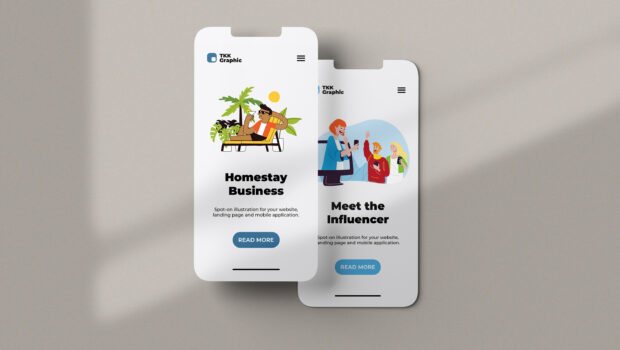6 Steps to Take After You Have an App Idea
You’ve just had an app idea and you’re now trying to decide what steps to take next. You’re not alone. Thousands of people want to turn their app idea into a reality but they aren’t sure; how to get started, what are the next best steps to ensure the app idea has the best chance at success or the proper steps to take from the moment of ideation to iteration.
In any case, you also have to be prepared for the possibility that not all your app ideas will make it to the final product. Therefore, it’s essential to be realistic about your chances of success by following proven steps. For example, if you’re pitching an idea for a virtual reality game in 2002, no one may care. Is there a market for such at that time? You can follow this six-step guide to avoid wasting time on dead-end app ideas.
1. Do some market research if you have an app idea
If you want to discover opportunities and challenges in your app idea, market research is the way to go. First, you need to know if your app has a market. If so, how big is it? Discovering if there is a market for your app idea will involve doing competitor analysis to check if any similar apps are already in the marketplace. It will also help to analyze their performance and understand their market share.
As you start your research, you may find that your idea isn’t exactly original. If you discover similar offerings in the market, it’s time to consider why yours will be different (or better).
A deep understanding of the targeted audience is also essential here. For example;
- What type of person would use your app?
- Would they be more likely to be male or female?
- Younger or older?
- More interested in gaming than photography, or vice versa?
This information helps define your target audience so that when you’re designing your product and marketing materials, later on, you know what sort of person your creations are aimed toward.
2. Craft a Lean Canvas
App development can be quicker and easier than you’d think if you know what to do with an idea! You can expand your research and discover the right idea by using the Lean Canvas method. This simple tool helps you prioritize which features to include in your app by asking questions about the problem, solution, and audience. In short, it enables you to understand how your idea fits into the market.
Crafting a Lean Canvas is also a way of testing the waters. It usually has four key components;
- Opportunity
- Channels
- Customer segments
- and Value proposition.
The first three are about identifying people’s problems and how your idea solves them. The last one, the value proposition, is more of branding. The value proposition is important because if you can’t clearly explain and convincingly show why someone should use your app, then there won’t be any point in building it.
3. Get funding
If you have an idea for an app that you think could be a big hit, there are several ways to get funding. First, consider whether you have the money needed to develop the app. If not, then look into other funding options, such as getting an investor or making a crowdfunding campaign. You can raise funds through crowdfunding platforms like Kickstarter and Indiegogo. These platforms help you raise money from people who believe in your product and want to see it succeed.
Alternatively, you can apply to several grants, programs, and competitions to get funding for your app. These funding opportunities are beneficial if you have an idea that is not yet fully formed, as they allow you to test out your ideas and see how much interest there is in them before committing to creating a product. The Visa Everywhere Initiative, FedEx Small Business Grant, and European Social Innovation Competition are a few examples.
4. Find a team
Now that you have a great idea and know what to do with it, the next step is to find yourself a team. There are two main options: either create an in-house team or outsource. Of course, both routes have pros and cons, but building an in-house team is generally more expensive than outsourcing.
In-house teams are great if you’re confident in managing the project and don’t mind the extra work of overseeing everything. However, if you’re not so keen on managing people and ensuring deadlines are met, outsourcing might be a better option.
Outsourcing your app development lets you focus on what matters most by hiring someone more experienced than you with these projects. Outsourcing companies like Uptech will help take your app through all stages, from design to development, and even promote it once it’s ready for release!
5. Develop your MVP
MVP, or minimum viable product, is essentially a prototype or beta version of your app released to a limited audience. It’s meant to test whether there’s enough demand for what you’re proposing before investing in the full development of the app itself. In other words, it allows you to validate whether your target audience will use and pay for your product.
An MVP is not just a bare-bones version of your idea; it’s a fully functional version with basic features only. Therefore, you should aim for an MVP that can solve at least one problem users face today and make it valuable enough to be worth paying for.
By building an MVP, you can determine which features need more work and which could be cut altogether because they don’t add much value to users’ experiences with your app, for example.
And finally, MVPs allow developers (and designers) at all levels to get involved with early iterations of an idea without investing too much time or money into something speculative.
6. Execute
Once you’ve created the MVP, it’s time to improve and execute the final product. To give yourself the best chance of success while executing, ensure you clearly understand your business model before jumping into any coding or design work. This way, when you’re ready to scale your application past its initial launch phase, you’ll know precisely where its weaknesses lie and how they can be improved.
If you don’t plan to scale your app, it will ultimately get lost in the sea of other apps. The best way to scale your app is by improving it over time. You should continuously test new features and iterate on existing ones even after execution to improve user retention and engagement.
It is also important to make sure that each feature you build has an underlying business strategy behind it. Otherwise, it will be too expensive and complicated to maintain in the long run.
Summary
An app idea is only the first step to building a successful app. The process that follows can be long and hard. However, the six steps mentioned in this article can help you determine what kind of app is right for you and your audience. Each step serves a different purpose, some about the idea stage and others relating to the development process.
Whether you hire remote developers or full-time designers to develop your app idea, remember to choose a trusted partner to collaborate with throughout the process because a good partnership can make all the difference.
Cover Image by Freepik
















